| Title | Spirit Hunter: Death Mark – Chapter 7: Kaerazu’s Amusement Park |
| Released | August 1, 2024 (JP) April 10, 2025 (WW) |
| Developer(s): | Experience Inc. |
| Publisher(s): | Aksys Games |
| Platform(s): | |
| Genre | Adventure, Horror |
| Rating | M |
| Price | $9.99 |
Completed on the Nintendo Switch in Handheld Mode
HowLongToBeat Time: N/A | My Clear Time: 4h 38m
Background
Kaerazu’s Amusement Park is a DLC chapter for Spirit Hunter: Death Mark, released exclusively in Japan on August 1st of last year. It takes place after the events of Red Riding Hood, the sixth chapter included with the PC and Switch versions of Death Mark. Serving as a continuation of the Good Ending route, this new chapter adds a fresh mystery centered around a haunted, abandoned amusement park — a fittingly eerie setting for the series’ atmospheric storytelling.
Kaerazu’s Amusement Park arrives nearly eight years after the original release of Death Mark. As of this writing, the DLC is available only on Nintendo Switch for $9.99. There is no announcement regarding availability on other platforms.
The development team for Kaerazu’s Amusement Park includes:
- Koji Kisu (Programming)
- Koji is known for Demon Gaze, Spirit Hunter Trilogy, Stranger of Sword City
- Motoya Ataka (Director)
- Motoya is known for Demon Gaze, Spirit Hunter Trilogy, Stranger of Sword City
- Rui Tomono, Fumiya Sumio (Concept Design, Character Designer / Artist)
- Rui is known for Zero Time Dilemma, Death Mark
- Fumiya is known for Spirit Hunter Trilogy
- Naoaki Jinbo (Composer)
- Naoaki is known for Demon Gaze, Spirit Hunter Trilogy, Undernauts: Labyrinth of Yomi
- Hajime Chikami (Producer)
- Hajime is known for Demon Gaze, Stranger of Sword City, Spirit Hunter Trilogy
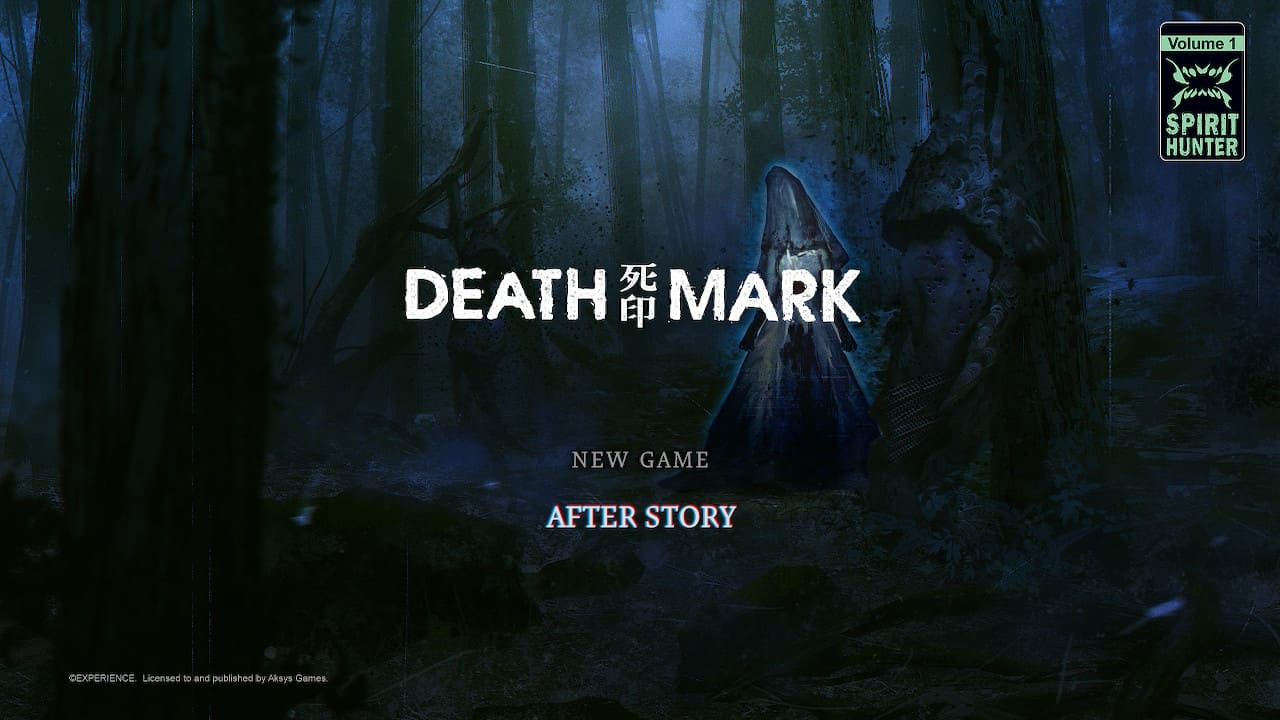
The new title screen sets the tone with spectral menace.
Experience
Having completed Spirit Hunter: Death Mark and its additional Red Riding Hood chapter, I was excited to return once again to the unsettling world crafted by Experience Inc. With the entire trilogy under my belt, I was especially curious about how Kaerazu’s Amusement Park would fit into the broader narrative arc of the series. The chance to revisit familiar faces and themes through a new setting — an abandoned amusement park — immediately caught my interest.
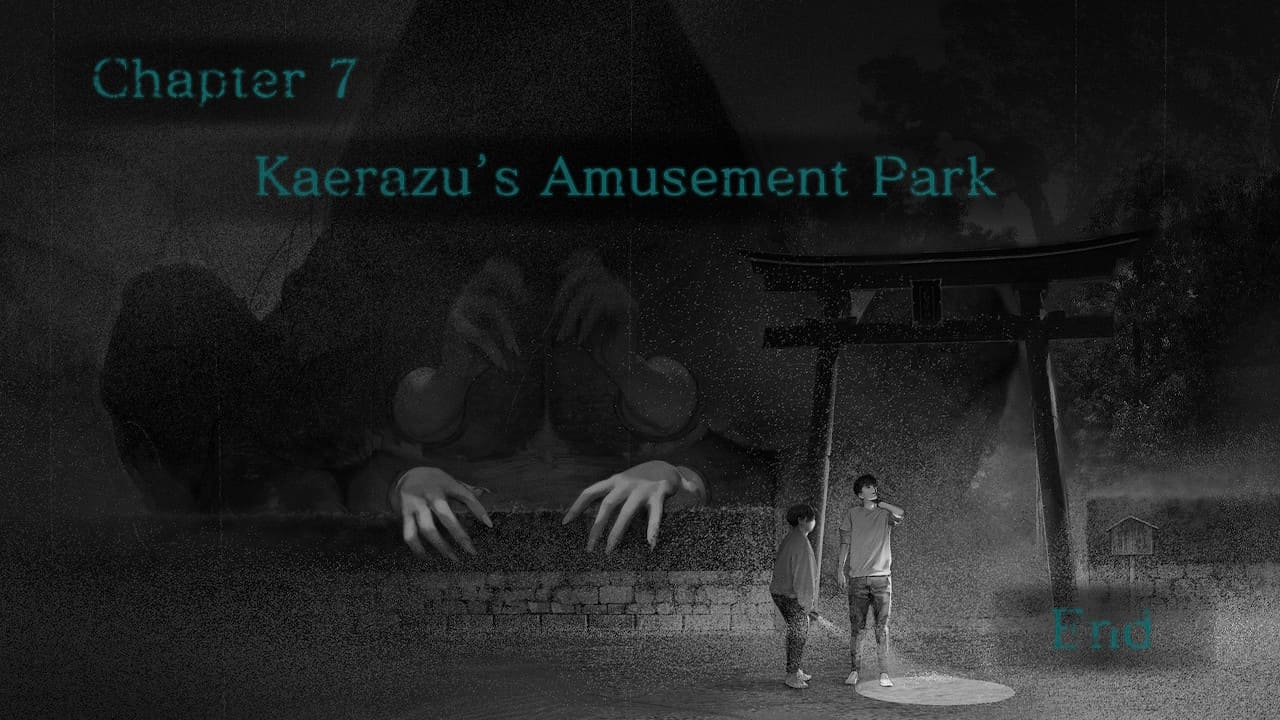
Chapter 7 closes with a cold, quiet finality.
Beyond the narrative, I was also curious about the translation quality. While the original release of Death Mark never felt like it was trying to insert anything unwelcome into the story, there were moments where awkward phrasing made some decision-making sequences unnecessarily confusing without consulting a guide. I came into this DLC hoping for a smoother experience in that regard, alongside the strong atmosphere, haunting spirit designs, and tough choices that made the series stand out.
Impressions
Introduction
Kaerazu’s Amusement Park wastes no time setting a chilling tone. Right from the opening moments, it captures the same oppressive atmosphere that defined Death Mark, while also feeling distinct thanks to the new setting. The abandoned amusement park is a natural fit for the series’ brand of psychological horror, blending childhood nostalgia with lurking dread.
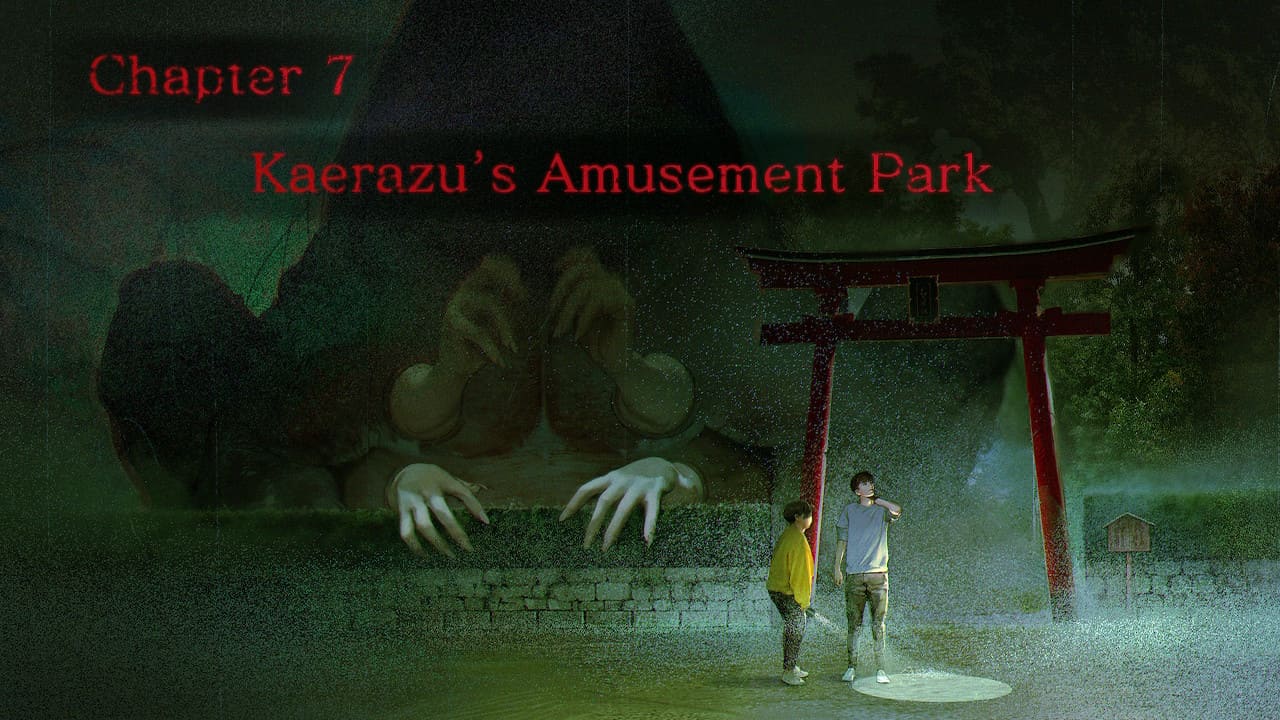
Chapter 7 begins with spirits lurking near the gate.
This chapter immediately reinforces the tension by offering familiar investigative gameplay, now layered with an even stronger sense of decay and danger. While the DLC builds on the foundation players are familiar with, it also finds subtle ways to increase the feeling of isolation and unease. It feels like a natural extension of the original story rather than a disconnected side adventure, with careful attention paid to maintaining the tone, pacing, and choice-driven tension that made the base game memorable.
Gameplay and Mechanics
Exploration & Interface
Exploration follows the familiar first-person format used in both Death Mark and Spirit Hunter: NG. You navigate areas grid-style, with a minimal interface built around five key functions: Record, Bag, Back, Examine, and Call Out.
- Record opens the save menu.
- Bag displays collected items, your current partner and their stats, the case’s Spirit File, and access to options.
- Examine is used at shimmering points in the environment to interact via contextual choices like “Look” and “Touch.”
- Back exits the current view or area.
- Call Out lets you speak to your partner, offering hints if you’re stuck and adding flavor to the scene through dialogue.
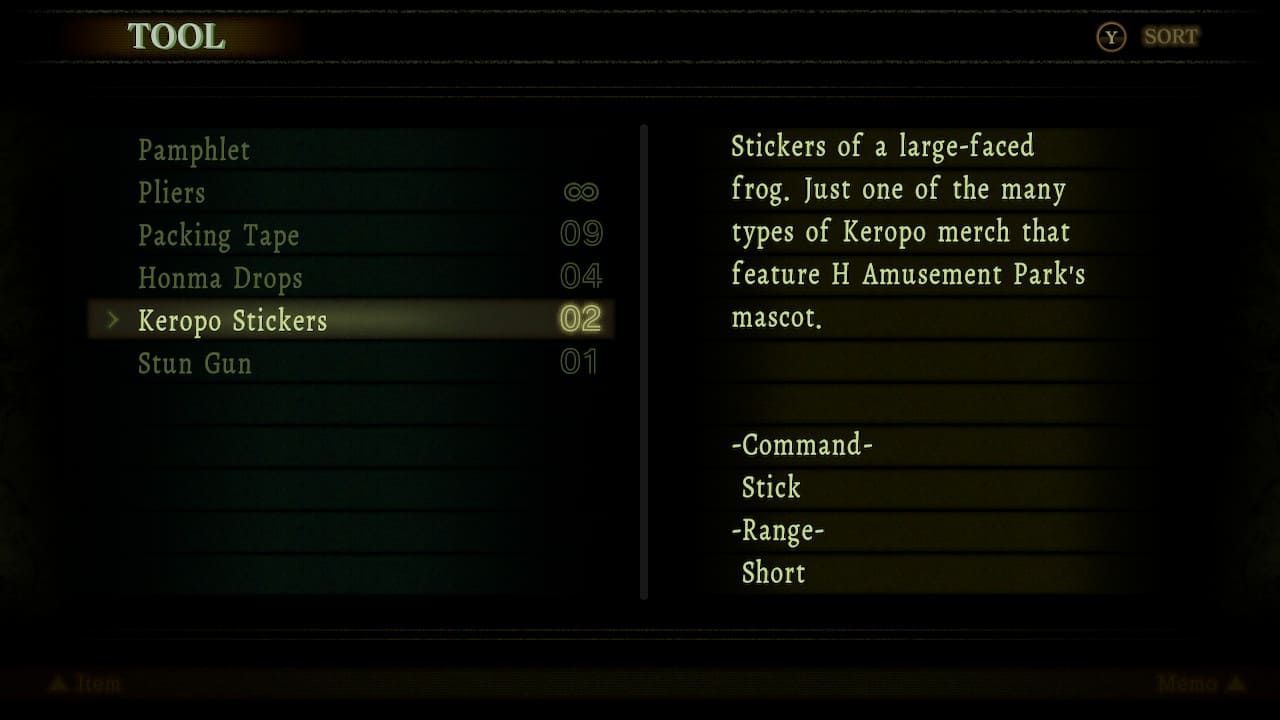
Keropo stickers might be cute, but they’ve got a purpose.
Partner Interaction
The Call Out system is more than just a hint tool. It adds character depth and reinforces the bond between you and your current companion. While not essential for progress, it offers additional context and atmosphere that deepens immersion.
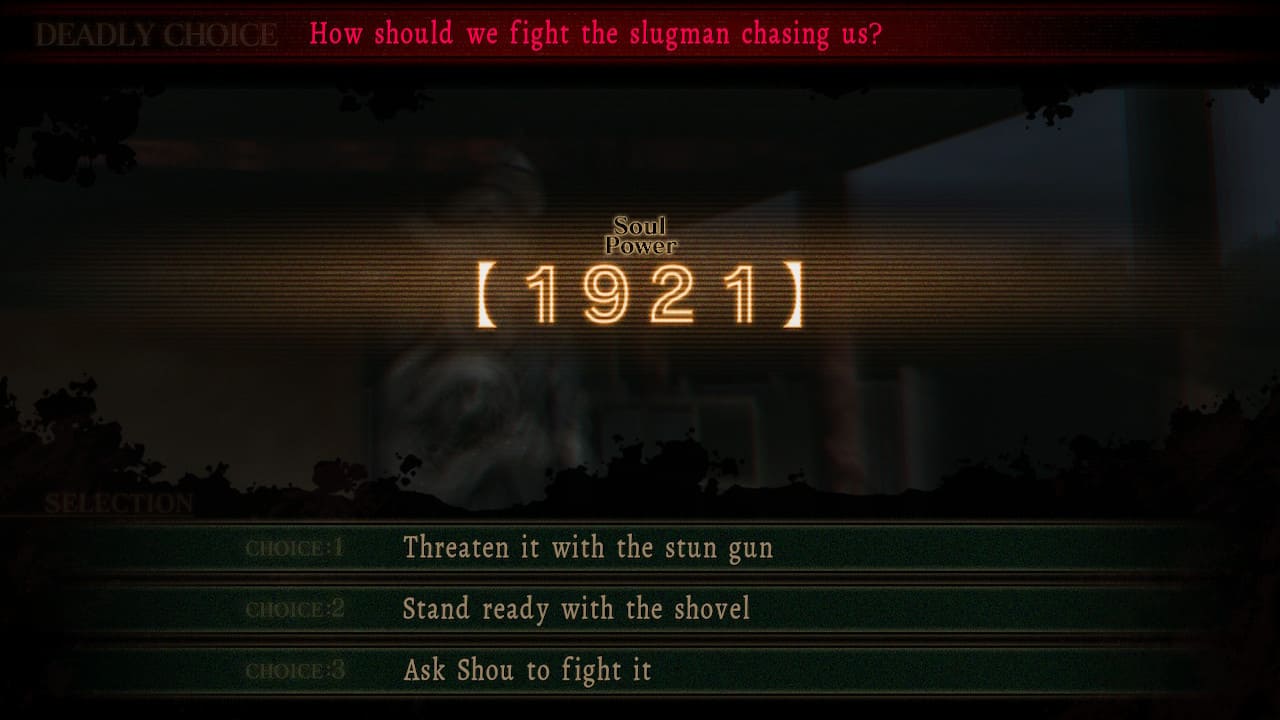
Deciding how to handle threats is key to survival.
High-Stakes Encounters
The signature Live or Die choices return, forcing quick decisions in dangerous moments. These segments are tense and punishing, often requiring close attention to clues scattered in the environment and dialogue. They’re still the highlight of the experience for players who enjoy deduction under pressure.
Art & Audio
Visual Style
Kaerazu’s Amusement Park leans into a darker, more rusted aesthetic than previous chapters. The setting amplifies the feeling of abandonment — broken-down rides, corroded metal, and hollow silence fill the park with a tangible sense of dread. This absence of life is oppressive, and the rare moments of brightness or animation are all the more stressful because of it, which plays directly into the series’ tension-driven design.
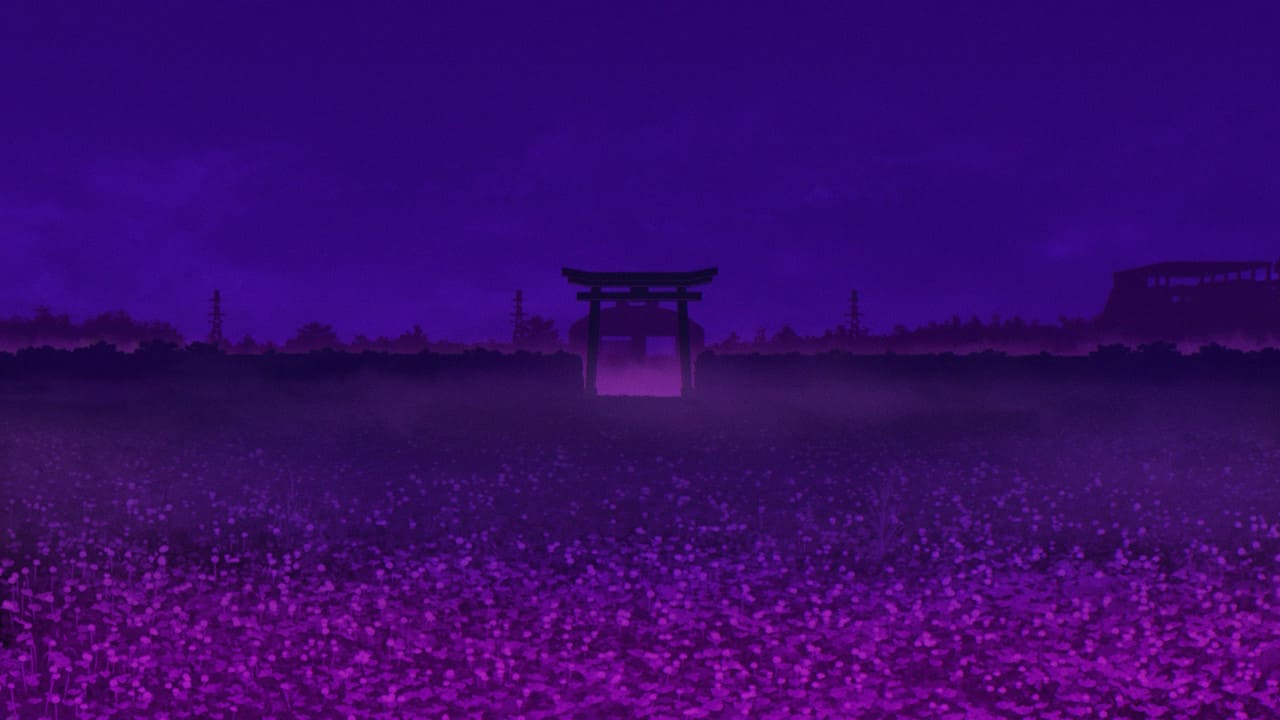
A vivid tori gate framed by colorful flowers and a deep indigo sky.
The hand-drawn art direction remains a strength. Despite the engine’s limitations, the use of shadows, static imagery, and lighting tricks create a deeply unsettling environment. It doesn’t rely on spectacle — it thrives on mood.
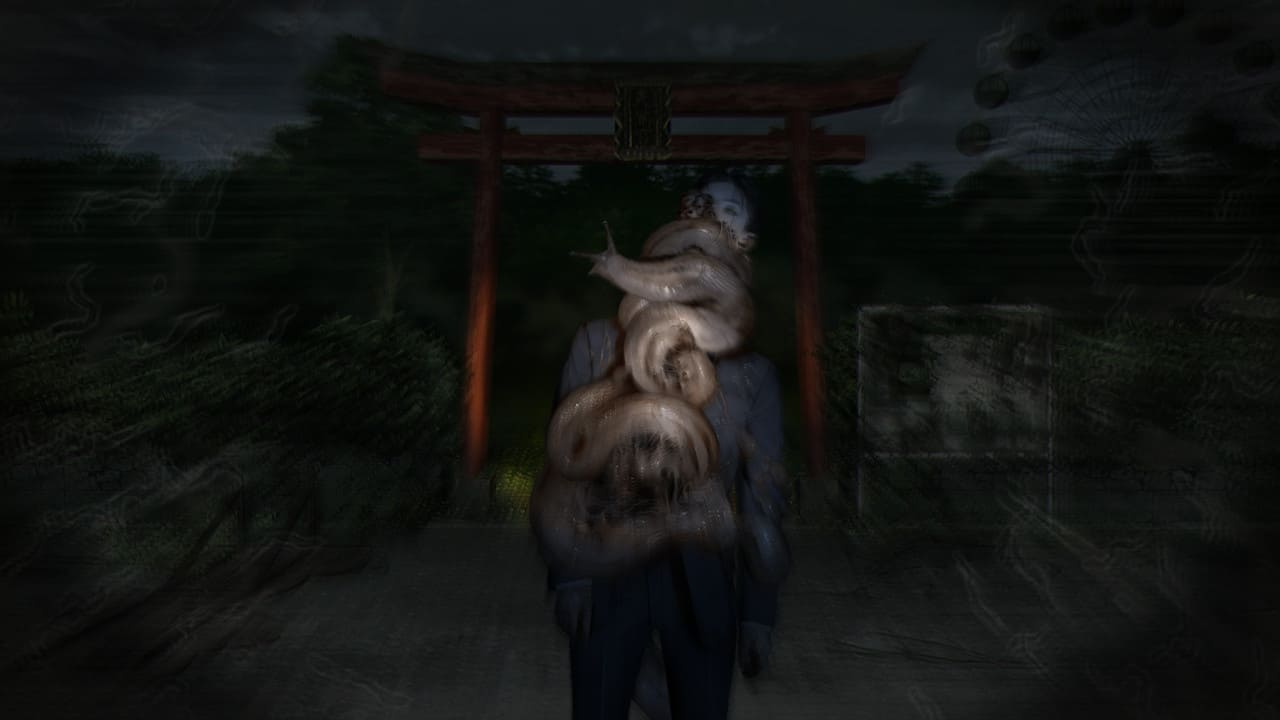
Facing a slugman with the ferris wheel looming behind.
Character Design & Spirits
Character portraits retain their signature oily, hyper-detailed finish — a hallmark of Fumiya Sumio’s visual style. Subtle animations and slick expressions bring intensity to dialogue scenes, while the spirit designs steal the show. The ghosts introduced in this chapter are grotesque and visually distinct, pushing discomfort in just the right way. They rank among the more memorable and creatively disturbing spirits in Death Mark so far.
Sound Design
The sound work is as sharp as ever. From the gushing of blood to creaking structures and mechanical ambience, every cue is precisely tuned to elevate discomfort. Disturbing noises hit cleanly and effectively, drawing players deeper into the setting. Music remains sparse but impactful — it’s the silence between the tones that amplifies unease.
Some standout tracks:
Bearers Of The Mark – A somber, piano-driven track layered with ambient textures and subtle strings. It sets a reflective tone, often used during moments of exposition or emotional gravity tied to the Mark and its consequences.
Madness – A dissonant and aggressive theme with sharp synth stabs, tense percussion, and a rhythmic structure that mirrors a descent into chaos. Captures the spiraling instability of characters and supernatural encounters.
A Night Like This – A melancholic track featuring delicate piano, reverb-heavy guitar accents, and soft ambient layering. It evokes a sense of contemplative isolation, often used during exposition or introspective dialogue.
Unique Features and Mechanics
Improved Translation
What sets Kaerazu’s Amusement Park apart from the base Death Mark is not just the new setting, but the significantly improved translation that makes the game far more playable and self-contained.
In the original release, the Spirit File often felt vague or poorly worded, leaving players relying on guides just to understand which items to use, which partner to bring, or how to handle certain spirits. This wasn’t a matter of difficulty, but of unclear communication.
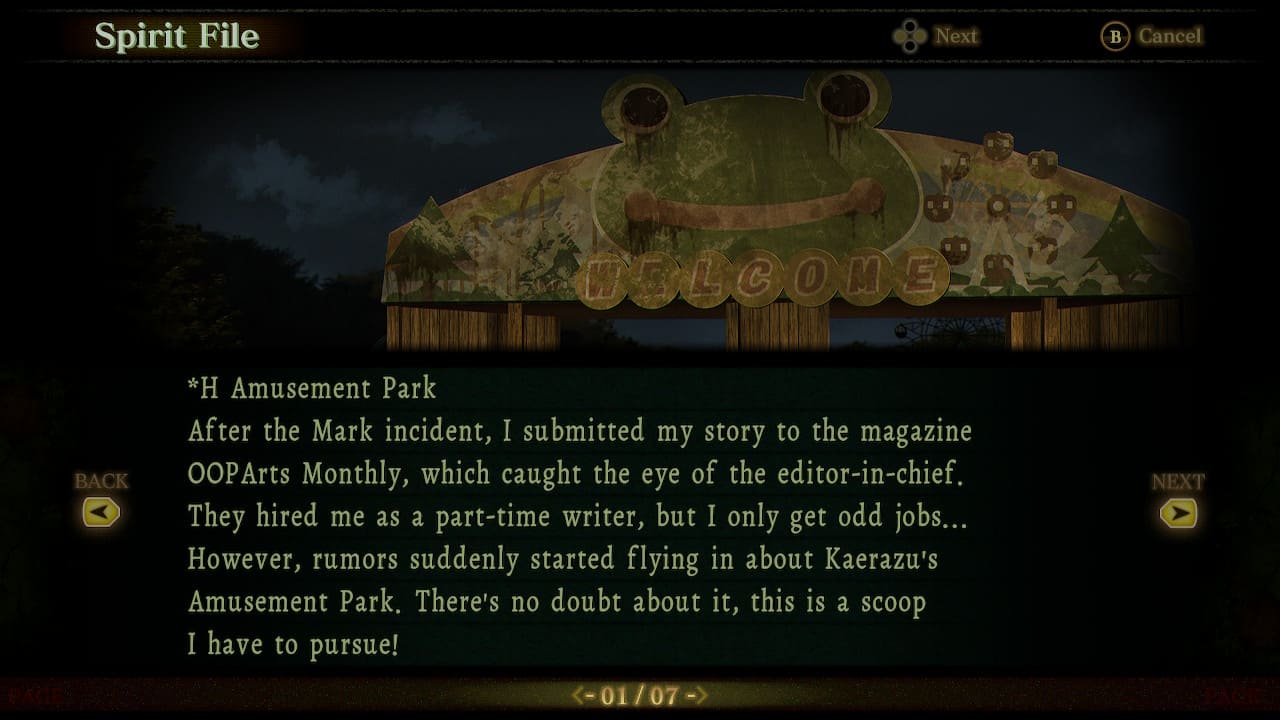
First page of the H Amusement Park spirit file.
In this DLC, the translation now supports the game’s design. The clues in the Spirit File are properly translated, allowing players to reason through the mystery and better understand the spirit’s background without needing outside help. The Spirit File mechanic now feels more effective, with writing that retains nuance while being clear and informative.
Tools like the conversation log and Spirit File are now vital, rewarding the player’s attention and enriching the experience without sacrificing the series’ core tension and mystery.
Eseential Tools
The Spirit File and conversation log now feel essential, offering deeper insights and rewarding player attention. These features enrich the experience and sustain the tension, ensuring immersion is never broken.
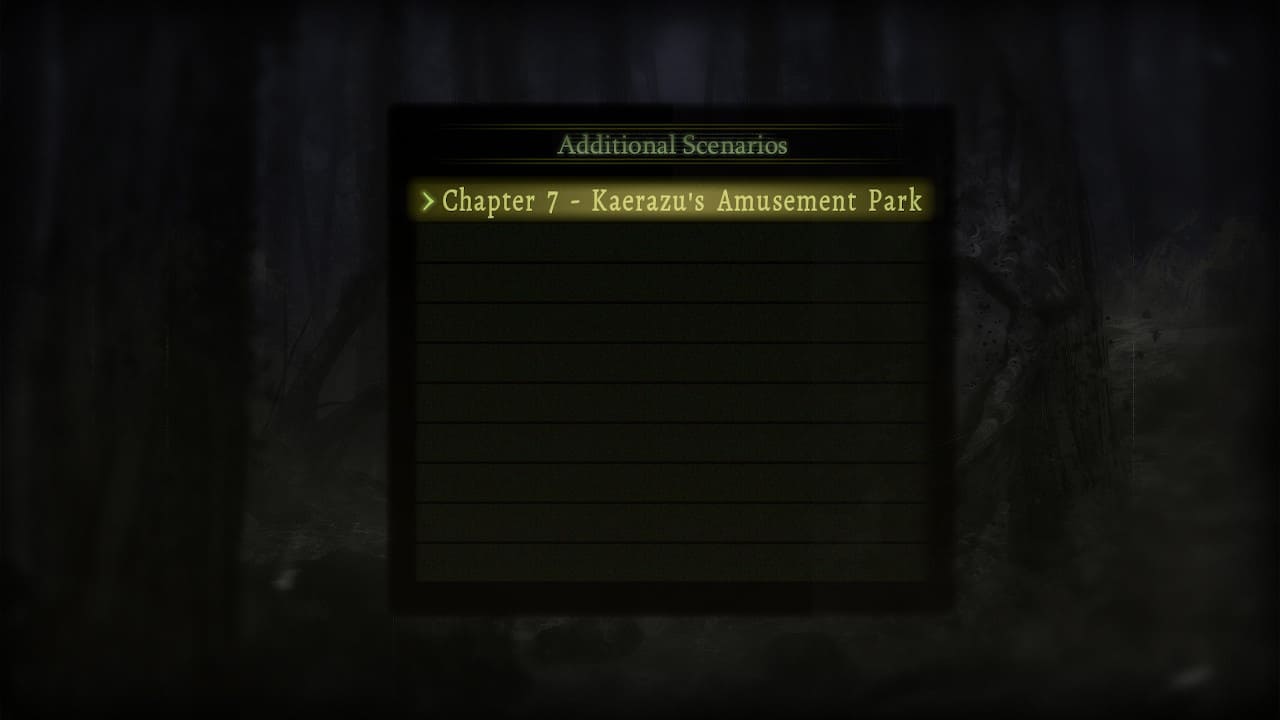
Highlighting Kaerazu’s Amusement Park in the additional scenarios.
Seperate Menu
The DLC is now accessible through a dedicated menu, allowing players to jump straight into the content without replaying the base game. This makes it easier for those who’ve completed the original to experience the new chapter without unnecessary backtracking, enhancing the overall user experience.
Seiyuu Performances
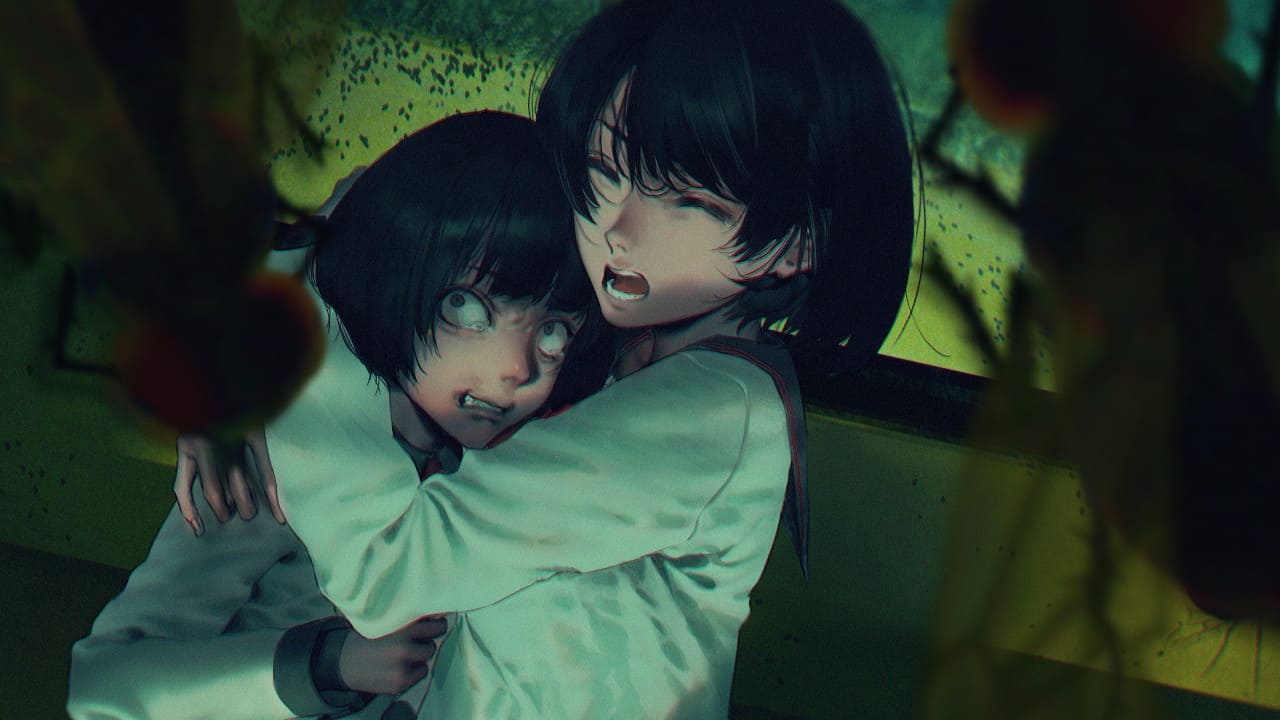
Terrified girls surrounded by eerie supernatural flies.
Voice acting in this chapter is sparse but intentional. These short spoken lines are reserved for key scenes, helping to punctuate tension or deliver emotional emphasis. The minimal use works in its favor, giving each instance more impact and helping immerse the player when it matters most.
- Yurika Takagi
- Known for Aquarius from Demon Gaze II, Yurika from Phantasy Star Online 2: The Animation, Tae from Blaster Master Zero: Trilogy
- Yoshiaki Kawabata
- Known for Canis from Demon Gaze II, Seeker from Monster Hunter World, Dylan from Metal Max Xeno
- Ryo Nezuka
- Known for Talis from Metal Max Xeno
- Ryota Nakamura
- Known for Robots from Mato Anomalies
Verdict
Kaerazu’s Amusement Park enhances the Spirit Hunter: Death Mark formula with a chilling new chapter set in a haunting, abandoned amusement park. The eerie atmosphere, unsettling spirits, and fresh visual designs are all in line with what fans expect, while the improved translation finally addresses the issues that plagued the original game. The Spirit File is now a useful tool, making it easier to navigate the investigation and understand the spirits without relying on guides.
The gameplay is familiar but effective, and the sparse voice acting, paired with unsettling sound design, heightens the immersion. While it stays within the core framework of Death Mark, this DLC is a welcome addition for fans, delivering more of the psychological horror and narrative intrigue that makes the series stand out.
For those who’ve completed the main game, the DLC can be started directly without replaying earlier chapters, making it easy to dive right into the new content. However, it’s worth noting that this chapter is best experienced after playing the main game, as it ties into the story’s larger arc.
For $9.99, it’s definitely worth the price of admission to revisit one of the most atmospheric entries in the series for four hours or more.
TLDR
Kaerazu’s Amusement Park (Switch)
8
Great
Summary: Kaerazu’s Amusement Park builds on the Spirit Hunter: Death Mark formula with a chilling new setting and a notably improved translation.
Familiar gameplay mechanics are reinforced by haunting visuals and subtle audio design, making this four-hour chapter a worthwhile, atmospheric addition for fans of the series.


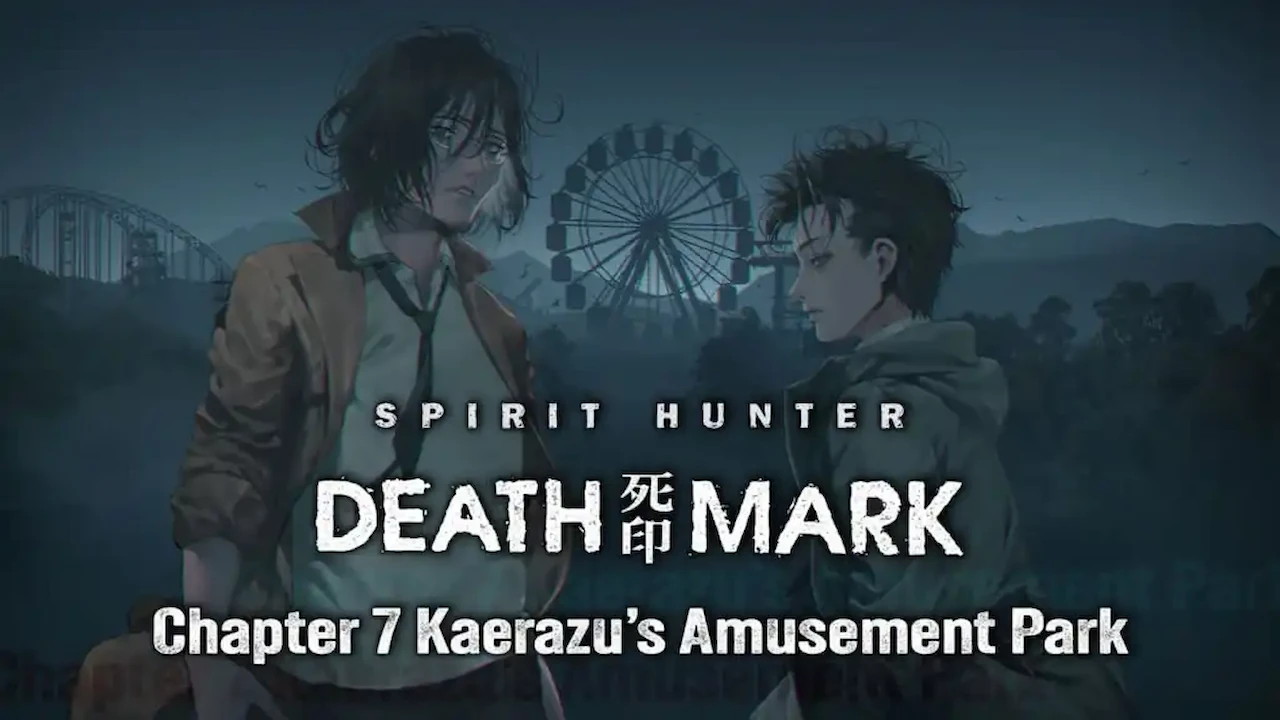
Leave a Reply